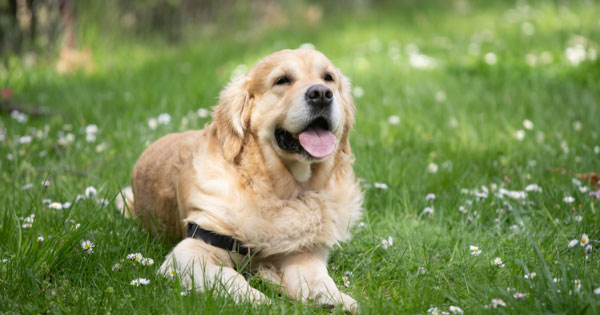
Is your pet overweight? Unfortunately, there’s a high likelihood that your pet is overweight or obese. Obesity is an ever-growing problem for household pets. According to the most recent survey by the Association for Pet Obesity Prevention, 59.5% of cats and 55.8% of dogs in the US are overweight. That’s over half the cats and dogs in the country!
Many pet owners don’t even realize their pets have weight problems. Many even prefer when their feline is a little flabby, or their pooch is pudgy. This is because many owners believe that a pet’s ideal body condition is too thin. Chubby pets are adorable but at what cost to their health? While you may not think a few extra pounds is cause for concern, that excess weight can be detrimental to your pet’s health. An overweight pet is much more likely to develop health problem such as:
- Diabetes
- Heart disease
- Arthritis
- Lung disorders
- Kidney dysfunction
- Chronic inflammation
- High blood pressure
- Metabolic and endocrine diseases
- Skin infections
- Various cancers
- Relative immobility fostered by excess weight
Excess weight can also drastically reduce your pet’s life expectancy. Therefore keeping them at a healthy weight gives them the best chance to have a robust, longer, pain-free life.
How do I Know if My Pet is Overweight?
To find out if your pet is overweight, or how overweight they are, have a candid conversation with your vet. They can let you know if your pet is a healthy weight or if they need to get started on a weight loss program. If necessary, your vet can assess your pet’s weight and make recommendations regarding diet, exercise, and treatment.
You can also get a rough idea of your pet’s ideal weight using a Body Condition Scoring Chart for cats and dogs. This chart allows you to evaluate your pet’s fat distribution. This involves assessing your pet’s abdominal tuck, evaluating their waist profile and thickness above, and feeling the fat pad over their ribs.
A dog or cat at its ideal weight is a 4/9 or 5/9 on this chart. This means their ribs are palpable without excess fat covering, the abdomen appears tucked up behind the rib cage, and the waist can be observed behind the ribs when viewed from above (should be an hourglass figure). Anything below or above the ideal weight, and you may have a problem.
Each point on the chart is correlated 10% under or over their ideal weight. For example, a Yorkie that’s a 7/9 is about 20% overweight. This means that instead of weighing 9 pounds, he should be at 7.2 pounds (9 pounds x 0.20 = 1.8 pounds overweight). However, be sure to check with your vet before completely changing your pet’s diet to ensure nutrition needs are being met.
How do I Keep My Pet at a Healthy Weight?
It’s probably no surprise, but there’s no magic remedy or a one-size-fits-all approach to helping your pet reach and maintain a healthy weight. What works for one pet may not work for another. Regardless, shedding excess pounds and keeping a healthy weight requires a commitment to a healthier lifestyle that revolves around caloric balance and increased activity.
Feed a Balanced, Nutritious Diet
The choice of food can be a complex one, so you want to enlist your vet’s help to get recommendations based on your pet’s breed, size, age, health status, and activity level. Reduce the number of calories your pet eats each day and keep food treats to a minimum. Try feeding treats that are lower in calories instead, like green beans, carrots, and celery. You should focus on nutritious and healthy pet food and chews. It may also be essential to slow your pet’s food consumption by providing smaller, more frequent feedings.
Encourage Your Pet to Move More Often
If your pet is cleared to resume exercising, increase the length and intensity of physical activities. Play fetch and take your dog on walks to break a sweat and generate the elevated heart rate needed for weight loss. You can also incorporate some hills, swimming, and any other activities that dogs love so much. On cold days, you can play “find the kibble” where you hide pieces in boxes, on chair rungs, and under rugs. Such activities can help your dog expend as many calories as they are taking in.
For cats, encourage them to move with a laser pointer or some other toys. Get a multi-story tree that your cat can run and jump onto. Your cat can also be leash-trained for walks.
Monitor Progress
After you’ve put your pet on a weight loss program, monitor their progress to determine if you’re getting results. Weigh your pet every 1 to 2 weeks until the ideal weight is achieved. In general, overweight or obese cats or dogs should lose about 1% to 2% of their weight every week. If there’s no significant weight loss, the program will need to be modified. Once the ideal weight is achieved, you’ll want to continue keeping a log and making necessary adjustments to maintain it.
Our team at Naples Coastal Animal Hospital can work with you to safely and successfully help your pet achieve and maintain a healthy body weight. Contact us today at (239) 500-0105 to learn more about weight loss for pets and to book an appointment.
